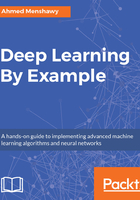
Unsupervised learning
Unsupervised learning is viewed as the second most common kind of learning that is utilized by information researchers. In this type of learning, only the explanatory features or the input variables (X) are given, without any corresponding label or output variable.
The target of unsupervised learning algorithms is to take in the hidden structures and examples in the information. This kind of learning is called unsupervised in light of the fact that there aren't marks related with the training samples. So it's a learning procedure without corrections, and the algorithm will attempt to find the basic structure on its own.
Unsupervised learning can be further broken into two forms—clustering and association tasks:
- Clustering: A clustering task is where you want to discover similar groups of training samples and group them together, such as grouping documents by topic
- Association: An association rule learning task is where you want to discover some rules that describe the relationships in your training samples, such as people who watch movie X also tend to watch movie Y
Figure 1.14 shows a trivial example of unsupervised learning where we have got scattered documents and we are trying to group similar ones together:
